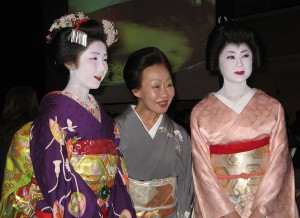Dear Portfolio Reader:
Throughout my educational career, I have loved writing. I used to make up fairytales and wrote all my thoughts and ideas down on a piece of paper. Often I wanted to be a writer and publish all these book ideas I had about mystical universes and inspirational characters. Although I tried very hard to succeed in my writing classes, I never thought I was good enough to make it one day. The grades that determined how good my skills needed to achieve my dream brought a huge stress upon me that diminished my desire. Since taking English 101, I have redeemed my hopeful thoughts to one day showing everyone why I love writing so much. My professor, Professor Pappas, gave me the room and structure I needed to try new material and improve my skills. I started off the semester with a decent amount of structural criticism on my first essay, and throughout the course I have focused on limiting those red pen corrections into just my original work itself. My biggest issue with writing is run ons and grammar errors. I have struggled my entire english and writing career with grammatical errors, and I have worked on noticing them ahead of time and focus on how I write before I just type away with something. The run ons have always been brought to my attention, but I never cared to correct it until this college writing class. I have noticed a sentence I was running a little too long, yet I never thought of how I could fix it without putting too much thought into it. I guess that’s the laziness in me that I am trying to correct.With the three essay’s themes I have written about this semester, I have very much enjoyed opening myself up to give the readers a little bit of my heart in each individual piece.
My Memoir is the first essay we were assigned in class that early March. I thought really hard on what I wanted to write about for my first essay. I had so many ideas, but when I landed on the perfect event to be part of my Memoir, I knew it would be themed Curiosity out of the CCP (Creativity, Curiosity, and Persistence) idea. I wrote about a specific occurrence that has since shaped me to the person I am today, a bisexual. Although I consider myself a reserved person, I wanted to make a statement about myself that showed I wasn’t afraid to be judged or criticized and that I loved myself for who I was. I wanted to show in this essay that it is okay to be different and to express my emotions on a very private event in my life and I hope it is reached to the readers. I was very excited yet nervous to post this on our writing blog that consist of my entire class I see twice a week and even complete strangers I never met, but that was the thrill of knowing I wrote something that I cared for that was all once inside my head and is now there for the world to see.
My second writing piece for the class extended on the CCP idea of the general theme Curiosity. I had to think of a question that could relate to curiosity. I thought, “Well everyone is curious about something at least once in their life” so it brought me to think on how can curiosity play an important role in life and what does it give us? Curiosity plays important roles in everyones life somehow and that being curious can branch into different ideas and feelings. This essay was a little more research based and really helped me brush up on creating a works cited page which I then learned that I was doing it wrong for the last four years. I enjoyed finding articles and essays with a similar perspective to mine on curiosity, and even making me think more about my subject and shaping my essay to what it is now.
The third and final essay I decided to include in my portfolio was an annotation essay on Geishas. This type of writing was new to me and at first seemed really interesting, but was my hardest essay to write. It was less on personal experience and very much all research. Although researching all these facts seemed dreadful, I really enjoyed picking a topic I was interested about and learning more about the culture, history and more. It was fun, but a lot more work than previous essays. I picked the topic of geishas because I wanted something that would tie myself into the essay, my interest in Asian culture, but I also wanted something that was different and not really thought of before with an interesting background. Being our last essay in class, I wanted to show my skills I have improved throughout the course and also wanted to connect myself to it in some way like the previous essays.
I hope you all see and enjoy my true thoughts and parts of my life in each topic of my portfolio picks. I have very much enjoyed taking English 101 and the essays I have written.
Erica Joyce
